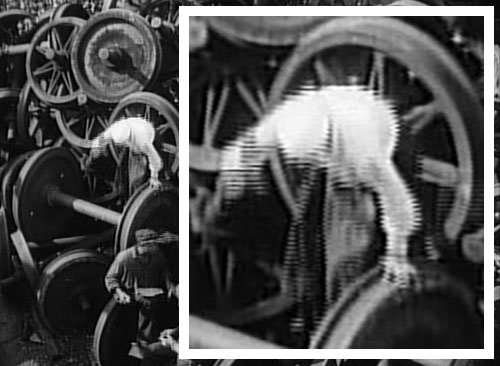Interlaced Video Scans is an obsolete bandwidth-saving technique
developed during the establishment of early television standards to
reduce the amount of image data needed to render a perceived complete
picture. The NTSC video format definition is 30 (29.97) interlaced
frames per second at 480 vertical lines of resolution per video frame.
Each frame is composed of two fields, consisting of 262.5 scan lines
per field for a total of 525 scan lines. At any one moment, only half the
picture is displayed. Through persistence of vision, a human perceives
a series of interlaced frames to be a complete picture.
One problem of interlaced scans is object and camera movements.
Highlight details against a dark background can clearly be seen as a
comb effect (see below example). The lines of the previous interlaced
field trail the lines of the current field in combination with the relatively
low refresh rate of the NTSC standard to create the effect.

Progressive video scanning eliminates this issue by displaying all
resolution lines in a frame at one time. Many current HD systems (disc
players and HD monitors) are capable of converting an interlaced
signal into a progressive scan signal (commonly known as line
doubling). We heartily recommend line doubling DVDs of silent films
to create a more filmlike picture.
Unfortunately, interlaced video is still used in DVD home video
products today.
More details on interlaced video scans may be found on Wikipedia.
•
|



































